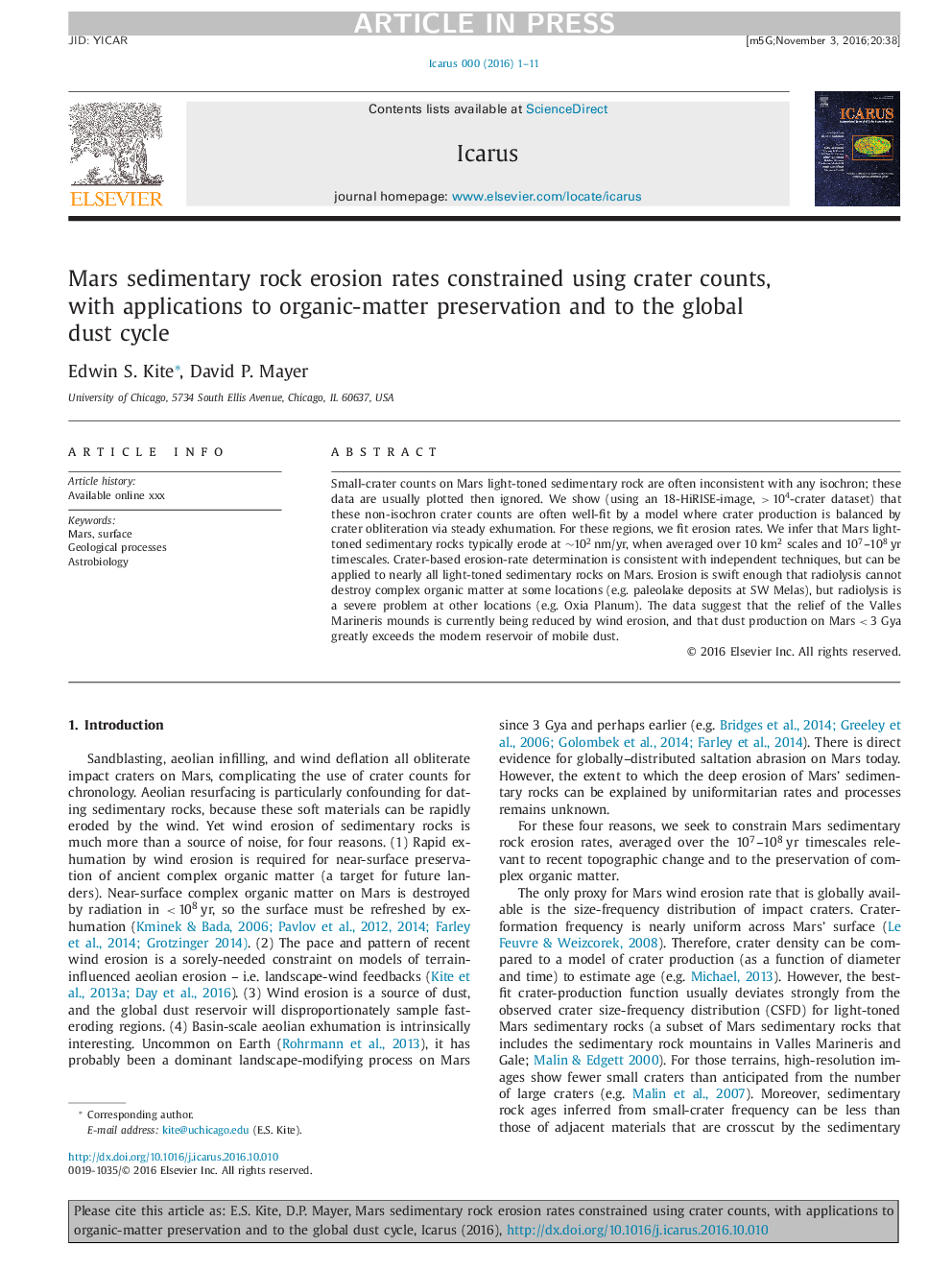| Article ID | Journal | Published Year | Pages | File Type |
|---|---|---|---|---|
| 5487106 | Icarus | 2017 | 11 Pages |
Abstract
Small-crater counts on Mars light-toned sedimentary rock are often inconsistent with any isochron; these data are usually plotted then ignored. We show (using an 18-HiRISE-image, >Â 104-crater dataset) that these non-isochron crater counts are often well-fit by a model where crater production is balanced by crater obliteration via steady exhumation. For these regions, we fit erosion rates. We infer that Mars light-toned sedimentary rocks typically erode at â¼102Â nm/yr, when averaged over 10 km2 scales and 107-108Â yr timescales. Crater-based erosion-rate determination is consistent with independent techniques, but can be applied to nearly all light-toned sedimentary rocks on Mars. Erosion is swift enough that radiolysis cannot destroy complex organic matter at some locations (e.g. paleolake deposits at SW Melas), but radiolysis is a severe problem at other locations (e.g. Oxia Planum). The data suggest that the relief of the Valles Marineris mounds is currently being reduced by wind erosion, and that dust production on Mars <Â 3 Gya greatly exceeds the modern reservoir of mobile dust.
Related Topics
Physical Sciences and Engineering
Earth and Planetary Sciences
Space and Planetary Science
Authors
Edwin S. Kite, David P. Mayer,
